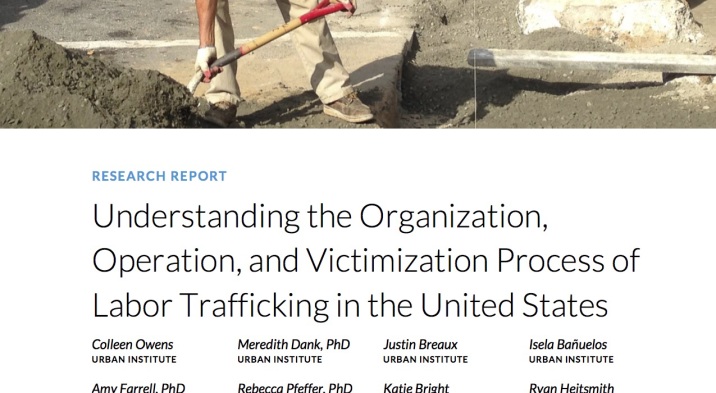
October 2014, Urban Institute & Northeastern University
On October 21st, the Urban Institute and Northeastern University released a new study on labour trafficking to the United States. The report examines the labour trafficking process, from recruitment, to migration, to the workplace, to escape from exploitative and sometimes violent circumstances.
Chapter four is dedicated to the recruitment process. As summarized in the report, the main findings are as follows:
- Many survivors of labor trafficking came to the United States in search of an opportunity to better their lives and often times the lives of their family members. Recruiters and traffickers used this desire to the disadvantage of the victims during the recruitment process.
- Victims of labor trafficking were most often recruited in their home countries. This pattern was generally consistent across industries.
- Victims of labor trafficking first learned of the job opportunities through their social networks. In some instances, those individuals passing along the information were unaware of the intentions of the recruiter and/or trafficker; in other cases, members of the victims’ social network were involved in their victimization.
- Recruiters were working on behalf of third- (or even fourth-) party employment agencies, which were often located in the victim’s home country. Many of these agencies had direct ties to groups and organizations in the United States.
- Fraud and coercion were prevalent during the recruitment process, but force was rare. Recruiters often used a combination of false promises and high-pressure, coercive tactics to get the victim to commit to the employment offer.
- Victims of labor trafficking often incurred debt during the recruitment process. In some instances, the victim’s home or the home of a family member served as collateral. The need to pay these debts, coupled with the moral obligations the survivor felt to his family, would later serve as a form of coercion and control during the victimization phase.
- During the recruitment process, victims entering the United States with a visa (the majority of our sample) came into contact with authority figures when applying for a visa at a US embassy or consulate. Recruiters and traffickers often trained the victims about the interview process with embassy or consulate staff. Overall, embassy and consulate officials did not distribute information regarding workers’ rights and protections or screen for indicators of possible human trafficking for victims in our sample.